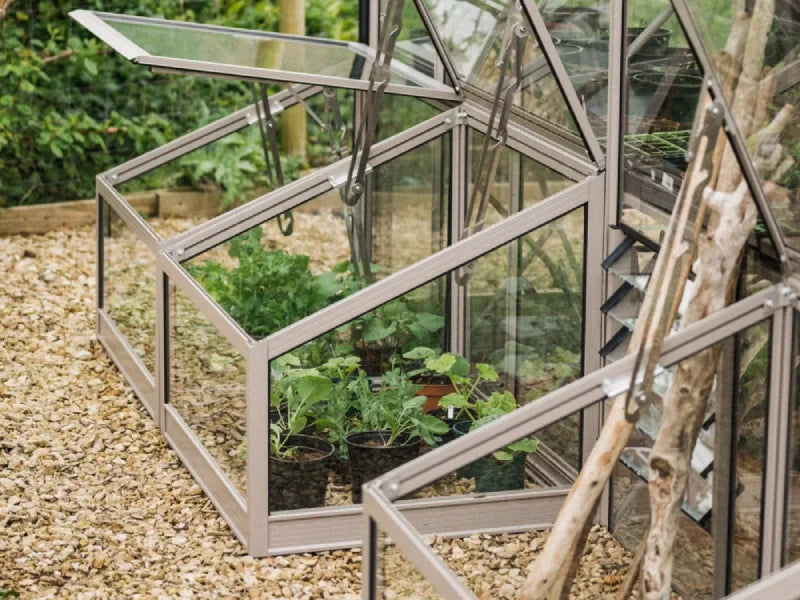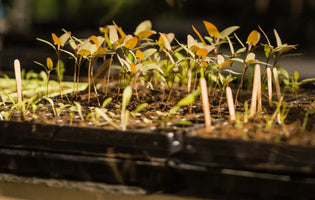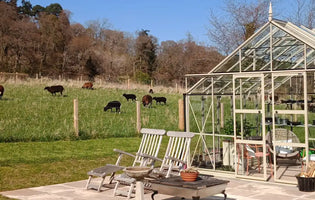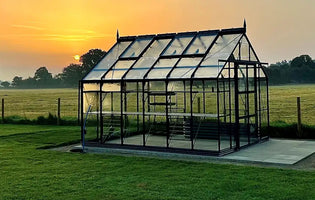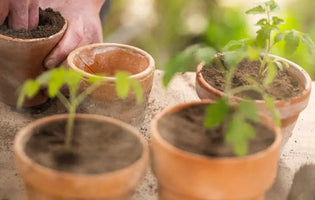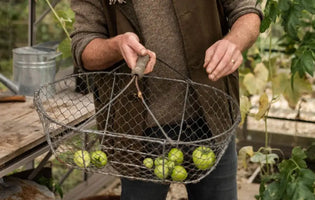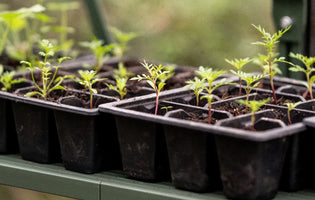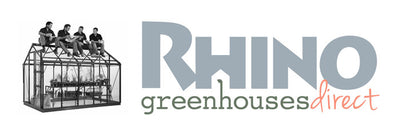Request a Brochure
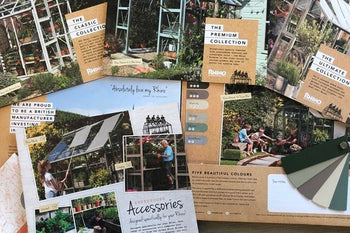
Transitioning your plants from the safety of a cold frame to your garden can be a scary process. Don’t worry we get it! No matter how scary it may seem; we are here to reassure you that transitioning your plants from your cold frame is not only a valuable step but a necessary process for your garden to thrive. Whether you are looking for a step-by-step guide for transitioning your plants from your cold frame to your garden or looking for advice about cold frame gardening, keep reading!
Quick Links:
Acclimating and hardening off
Before we talk about how to transition your plants from your cold frame to your garden, let's take a moment to explain the process behind transitioning your plants.
Cold frames are vital for protecting your plants over the winter, by supplying shelter and insulation from harsh weather conditions and frost. But once the weather begins to heat up and the last frost has passed, it is time to begin the transition from cold frame to garden.
There two crucial steps that need to be taken when transitioning your plants – acclimation and hardening off.
Acclimation:
Acclimation, put simply, helps transition your plants from one environment to another. It is a bit like moving from a warm room inside to the crisp air outside in spring: you need a few moments to get acclimated to the temperature, and so do your plants. That is why acclimation is crucial when transitioning your plants from the warmer environments of your cold frame to the cooler temperatures of your garden.
When acclimating your Rhino Cold Frame, we recommend opening the lid of your cold frame for a few hours throughout the day, to introduce your plants to the range of temperatures and weather conditions within your garden – just be sure to start with short periods of time to build up your plants’ resilience.
Hardening Off:
Following acclimation, hardening off takes it up a notch. Instead of just opening the lid of your cold frame during the day, hardening off requires you to remove your plants from the safety blanket of the cold frame and introduce your plants to the great outdoors.
Over the period of a few weeks, we recommend that you gradually increase the time your plants spend outside of the cold frame, starting out with an hour and building up, until they no longer need the safety of the cold frame. Our top tip is to take things slow and not rush into things, by slowly building up time outside, you will reduce the risk of your plant going into shock.
Why these steps are crucial
Skipping straight from cold frame to garden without these steps is a big no-no! Without proper acclimation and hardening off, plants can suffer from "transplant shock," leading to droopy leaves, stunted growth, or worse, saying goodbye to your green friends.
Transplanting: picking the perfect time to plant
“But how do you know when it is the best time to transition your plants?” we hear you say. Well at Rhino Greenhouses Direct, we follow a few telltale signs that your plants are ready to brave the great outdoors:
How to check if they’re ready
Root check: More times than not your plant will tell you when they are ready! Take a peek at the roots: if they are nice and developed, but not overcrowded, your plant may be ready to face the great outdoors.
Growth spurt: As well as in the roots, keep an eye on any growth spurts above the soil. Strong stems and leaves mean they’re gearing up for the big move.
How to ensure a seamless transition
Start the countdown: Once the weather has begun to heat up and the last frost has passed you can begin the process of acclimating your plants inside your cold frame. Start with short periods of time and over the course of 7 to 14 days begin increasing these periods.
Gentle intros: After introducing your plants to the outdoors gently through acclimation, you can gradually begin to introduce your plants to the outdoor world. Just remember to opt for days with calm weather conditions and avoid heavy wind and rainfall.
Up the ante: Increase their outdoor time slowly, letting them bask a bit longer each day. It’s about adapting to the new climate at their own pace.
Keep cosy: Use cold frames or frost covers as necessary to protect against late frosts or chill nights. Think of it as their safety net.
Nighttime vigil: Keep an eye on nighttime temps. If it gets too chilly, bring them back to their cold frame or cover them up for the night.
Stay alert: Monitor your plants for any signs of stress or discomfort. If they’re not taking well to the sun or the breeze, give them a break in the shade.
By blending acclimation with the hardening off process, you’re not just prepping your plants for a change of scenery: you’re equipping them with the resilience they need to face the world outside their cold frame. It’s about ensuring they make a grand entrance into the garden, ready to grow, bloom, and steal the show.
How to avoid common transplanting mistakes
Choose the right time: Avoid transplanting during the hottest part of the day. Choose the gentler conditions of early morning or late afternoon to reduce stress on your plants.
Pest and disease inspection: Conduct a thorough check for pests and diseases before transplanting. Preventing the spread of issues to your garden is crucial for a healthy transition.
Proper planting depth and spacing: Ensure plants are planted at the correct depth and spaced appropriately. Too deep or too close can hinder their growth and development. Aim for just the right amount of room for each plant to flourish.
By playing it smart and timing your move just right, you’ll give your plants the VIP treatment they deserve, setting the foundations down so that the plants can thrive to their fullest potential. Let’s get ready to transition those plants so that your garden is blooming lovely for summer!

